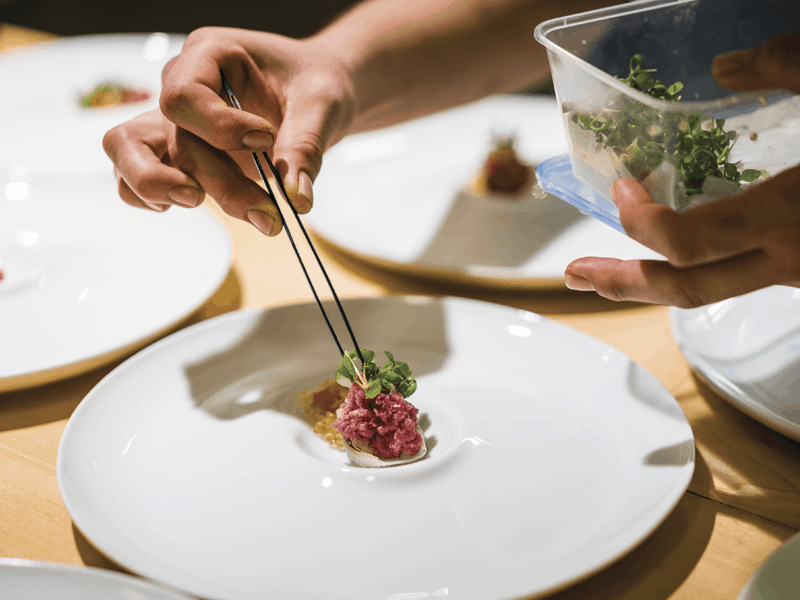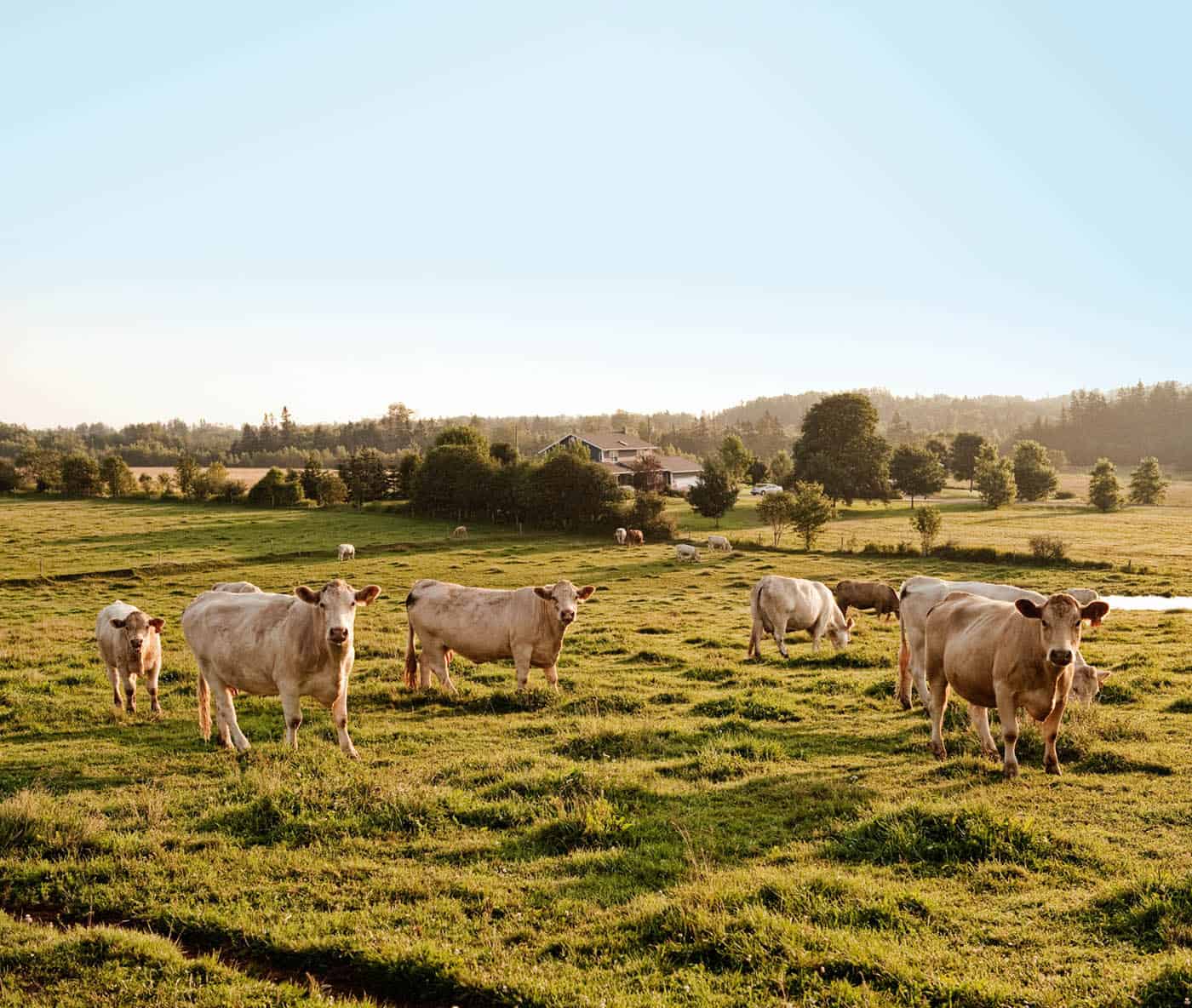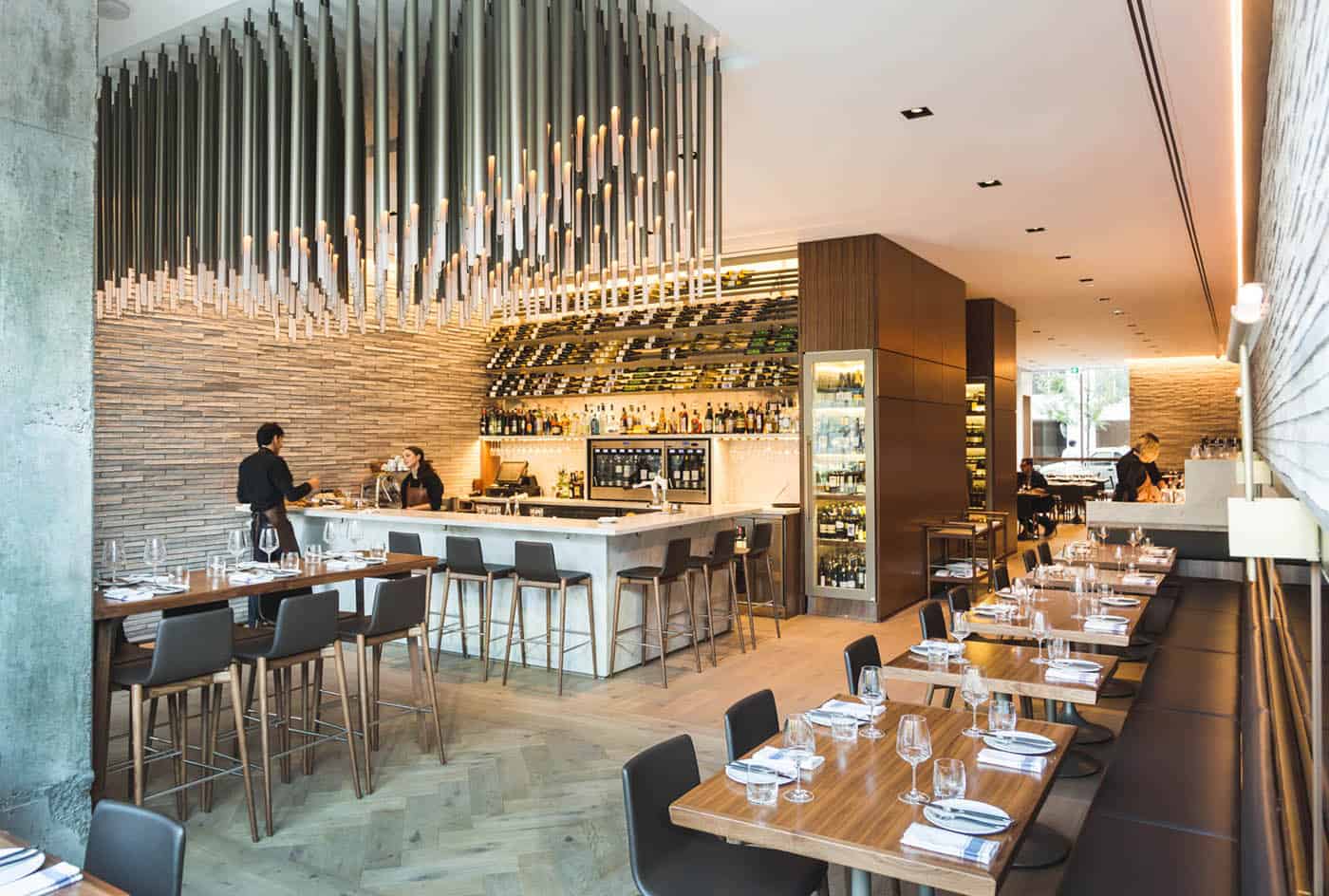
In the culinary paradise of Spain’s Basque region everyone has a passionate opinion on local chefs, restaurants, and how to make traditional dishes best.
WHEN YOU are at a bar in Bilbao, you don’t order “olives with peppers and anchovies” or “potatoes with onions” to accompany your glass of txakoli, the local white wine. You ask for a “Gilda” or a “Grillo” Like other chic and sophisticated dishes called Suzette or Newburg, these snacks, or pintxos, have precise names that must be respected, even though they are surprisingly humble combinations of two or three ingredients on a stick.
Here in Basque country, there is a specific way to arrange these pintxos on plates, a particular size for the traditional cups the wine is served in and a definitive way to cook beef ribs over a wood fire to make the famous chuleta. And there is a unique method of combining cod broth with olive oil, pepper and garlic to create a silky emulsion called pil-pil, a sauce usually served with the side of the cod’s jaw, a soft chunk of flesh called kokotxa.
Many passionate diners consider the Basque region to be the world’s premier destination for high-end gastronomy. It is a hotbed of inventive cooking, with a high concentration of Michelin stars. Above all, it’s a region where everyone seems to have strong opinions on restaurants and dishes and ingredients. If you want to start a conversation with someone, ask about their favourite recipe for bacalao (cod) or brand of canned tuna.
In 2017, to celebrate the 20th anniversary of the Frank Gehry-designed Guggenheim Museum Bilbao, Josean Alija—chef at Nerua, the restaurant in the museum— launched Ongi Etorri, a series of events in which he invites internationally acclaimed chefs to cook with him. In September, he asked Mitsuharu Tsumura of Maido in Lima. And in November, Alija invited Ana Roš of Slovenia’s Hiša Franko, who was featured on Netflix’s Chefs Table and named World’s Best Female Chef of 2017 by the World’s 50 Best Restaurants, to help him prepare a four-hand dinner that we attended.
The meal cooked at Nerua that night by Alija and Roš was spectacular, featuring a heart-warming soup made with tomatoes, traditional Basque sopako bread and tuna heart, as well as a delicate dish of cockles in hake juice and a delicious dessert featuring the unlikely combination of apples and bone marrow.
Alija also organized a pintxo tour for us that demonstrated how simple bar food, whether a Gilda, a Grillo, a piece of omelette or a plate of sautéed mushrooms, can become the centre of a conversation among strangers and new friends.
The event and tour were co-sponsored by the Spanish ham company Cinco Jotas, which fed us copious amounts of their exquisite Pata Negra, the cured ham produced from black-footed pigs that roam free on the Iberian Peninsula, feasting on acorns. We sampled other local delicacies at Zallo, a high-end canning company in Bermeo, one of the main fishing ports in Basque country. Zallo produces, among things, canned tuna belly and mussels for Albert Adrià. Formerly the pastry chef at El Bulli, led by his brother Ferran, Albert has since opened Enigma and Tickets in Barcelona and become one of the country’s most acclaimed chefs. In Spain, where canned seafood is often more expensive than fresh, tinned bonito tuna is not used to make cheap sandwiches—it’s a delicacy, and the fatty tuna bathed in top-quality olive oil is so tender that it literally melts in the mouth.
But the Basque country is also a destination for pilgrimages to institutions that sit at the top of international best restaurant lists. So I decided to take the opportunity to visit Mugaritz, the innovative establishment of Andoni Luis Aduriz, a publicity-shy genius who keeps pushing the boundaries of the avant-garde movement that started in Spain in the ’90s. There, I was served a roasted woodcock head with truffles as well as sea urchins displayed on a piece of ice shaped like a tongue, paired with wines curated by sommelier Guillermo Cruz, an up-and-coming star of the wine world whose work is influenced by the molecular sommellerie research of Canadian pairing expert François Chartier.
The experience was extreme and somewhat disconcerting but never boring, like an art festival where I may not enjoy everything but appreciate the more challenging works for the new ideas they trigger and the unexpected memories they leave behind.
My other reservation was at Asador Etxebarri in Axpe Atxondo, where another publicity-shy chef, Bittor Arginzoniz, cooks and smokes everything from baby eels—tiny, silky, delicate and stringy creatures that feel almost like pasta when they enter the mouth—to goat’s milk butter and caviar over different wood fires. And, like every-where in Basque country, there is chuleta: perfect, wood fire-grilled beef, tender and just fatty enough, cooked using nothing but its own natural flavours. Located in a small village surrounded by green mountains, Etxebarri has just 10 tables, offers only a tasting menu and must be booked well in advance. Is it worth the effort? Totally.
The event and tour were co-sponsored by the Spanish ham company Cinco Jotas, which fed us copious amounts of their exquisite Pata Negra, the cured ham produced from black-footed pigs that roam free on the Iberian Peninsula, feasting on acorns. We sampled other local delicacies at Zallo, a high-end canning company in Bermeo, one of the main fishing ports in Basque country. Zallo produces, among things, canned tuna belly and mussels for Albert Adrià. Formerly the pastry chef at El Bulli, led by his brother Ferran, Albert has since opened Enigma and Tickets in Barcelona and become one of the country’s most acclaimed chefs. In Spain, where canned seafood is often more expensive than fresh, tinned bonito tuna is not used to make cheap sandwiches—it’s a delicacy, and the fatty tuna bathed in top-quality olive oil is so tender that it literally melts in the mouth.
But the Basque country is also a destination for pilgrimages to institutions that sit at the top of international best restaurant lists. So I decided to take the opportunity to visit Mugaritz, the innovative establishment of Andoni Luis Aduriz, a publicity-shy genius who keeps pushing the boundaries of the avant-garde movement that started in Spain in the ’90s. There, I was served a roasted woodcock head with truffles as well as sea urchins displayed on a piece of ice shaped like a tongue, paired with wines curated by sommelier Guillermo Cruz, an up-and-coming star of the wine world whose work is influenced by the molecular sommellerie research of Canadian pairing expert François Chartier. The experience was extreme and somewhat disconcerting but never boring, like an art festival where I may not enjoy everything but appreciate the more challenging works for the new ideas they trigger and the unexpected memories they leave behind.
My other reservation was at Asador Etxebarri in Axpe Atxondo, where another publicity-shy chef, Bittor Arginzoniz, cooks and smokes everything from baby eels—tiny, silky, delicate and stringy creatures that feel almost like pasta when they enter the mouth—to goat’s milk butter and caviar over different wood fires. And, like every-where in Basque country, there is chuleta: perfect, wood fire-grilled beef, tender and just fatty enough, cooked using nothing but its own natural flavours. Located in a small village surrounded by green mountains, Etxebarri has just 10 tables, offers only a tasting menu and must be booked well in advance. Is it worth the effort? Totally.
Despite all this, many people’s first association with Spanish gastronomy is molecular cuisine, with its foams and eccentric jellies and trompe l’oeil dishes. One of the most famous proponents is Ferran Adrià, grand master of the world-famous El Bulli, which ruled over Iberian cuisine for two decades before it closed in 2011. But the Basque country was a centre for culinary excellence before Adrià turned Catalonia into the epicentre of the Iberian culinary move-ment. In fact, many people believe San Sebastian chef Martin Berasategui set the bar for chefs like Adrià, and that it was Juan Mari Arzak who paved the way for Adrià’s deconstructive creativity at his eponymous three-Michelin-starred restaurant, now led by his daughter Elena.
“What? You are going to Arzak?” asked my cab driver on my first visit to San Sebastian in 2010, visibly impressed. Restaurants, he explained, are at the heart of the culture of Basque country, and their customers come from every corner of this tight-knit society. Over the course of the trip the driver explained that every year he scrimped and saved so that he could enjoy one meal at Arzak with his wife. And when I told him that the chef would join us later in the taxi to lead me and my colleague on a pintxo tour, he seemed more starstruck than if we’d been joined by Mick Jagger. — Marie-Claude Lortie



